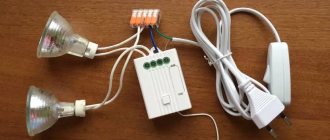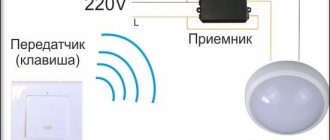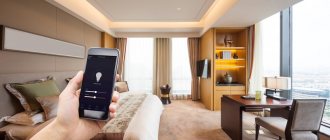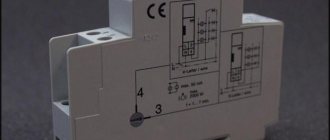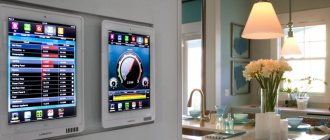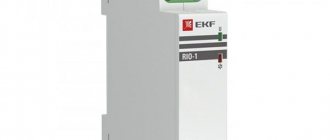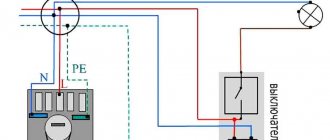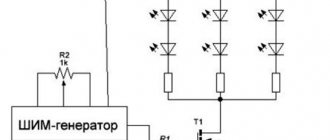One day I was faced with the task of modernizing the external lighting control system: artistic lighting of facades, advertising signs, street poles, illumination of address signs, etc. The need for modernization was caused by the fact that the operation of lighting installations required frequent human intervention. In order for the control to work as expected, it was necessary to manually adjust the on and off times.
The modernization involved maximum use of the existing engineering and IT infrastructure. It was necessary to refrain from installing new or replacing old equipment and to minimize the list of software used. The principles applied in the control system must be universal and reusable. The system must be easily expandable. Lighting installations put into operation can be installed in different areas of the city, in different regions or countries.
Understanding the infrastructure
In practice, I have come across several approaches to controlling outdoor lighting: regulated switching on and off by operating personnel, the use of time relays, twilight sensors, photo relays and astronomical relays.
The use of astronomical relays is probably one of the most interesting solutions. Their work is based on determining the times of sunrises and sunsets in a certain geographical location. During sunset the lighting turns on, during sunrise it turns off. Typically, when configuring such relays, it is possible to set temporary adjustments to speed up or slow down the action of the relay. Making such adjustments allows you to turn on (turn off) the lighting a few minutes later than sunset or earlier than dawn.
The system we are modernizing works according to a similar scheme. A freely programmable logic controller (PLC) acts as an astronomical relay. Via RS485 line, the PLC controls proprietary I/O modules that are installed in different buildings. The system is controlled and configured using SCADA and an OPC server installed on one of the machines on the Ethernet network to which the PLC is connected. All software used is proprietary.
PowerLine
Electronic lighting control and monitoring carried out by exchanging data via electrical wires without the need to install additional data cables and maintaining all the functional characteristics of the lighting system.
To use PowerLine technology, the primary side of the lighting system must be equipped with a PowerLine transmitter, and its secondary side, i.e. the lamps themselves are the corresponding receivers. As a rule, luminaires are equipped with traditional dimmable ballasts with a DALI or 1-10 V interface. PowerLine allows communication between the control element and a conventional dimmable luminaire without the need for an additional communication network. In the same way as in the case of using the DALI protocol, the lighting system retains its full functionality, and at the same time the controller from his console can, for example, adjust the lighting intensity on less busy streets at appropriate intervals, thus achieving significant energy savings. Or vice versa, using a PC to provide additional local lighting in the event of cultural events in an illuminated part of the city or town in the evening.
Identified deficiencies and their causes
During the operation of lighting installations, it became clear that the control system requires constant personnel attention. By and large, it all came down to what became obvious: the lighting of buildings turns on too late and turns off too early. This problem was solved by adjusting the coefficients in the dispatch system. By manually selecting coefficients, it was possible to achieve on- and off-times that corresponded to the city schedule. The odds remained unchanged until the next similar situation. And such situations were repeated quite often.
It was assumed that the cause of the problem lay in the project loaded into the PLC. It was not possible to get acquainted with the source code of the project. From the text description of the project, it became clear that to determine the time to turn on/off the lighting, a functional block available in a proprietary programming environment is used. Using the trial version of this environment, we were able to access help and a more detailed description of this block. This brought some clarity: the functional block calculates the time when the angle (height) of the Sun above the horizon for a given geographic location becomes equal to 0. Coefficients correct this angle. For example, with a coefficient of “-6”, the time will be calculated when the Sun is 6° below the horizon. But during the experiments, it was believed that the functional block does not perform calculations exactly as expected. Further work in this direction was stopped due to the lack of universality of such an implementation.
Benefits of remote control
Initially, smart home systems were equipped with light control devices. They are quite expensive and not available to all consumers. With the development of modern technologies, the use of lighting control devices has expanded significantly and become more accessible.
Let us highlight the advantages of remote control systems:
1. The security of the premises increases. A computer or smartphone will help ensure visibility of presence in the room. By turning on or off the lights in the room, you create the feeling of the owners' home appearing.
2. There is a savings on building materials during installation. There is no wiring with this option.
3. The systems operate autonomously and are not afraid of interruptions in the current supply.
4. The connection diagram is convenient for simultaneous installation of several points.
How to organize lighting control?
There are several methods for installing remote control systems for devices. A single controller can be installed. It is placed in an accessible place. It is also convenient to use the remote control. This can be a common device, but it is more convenient to connect the bullets to each room.
The smart home system is the most advanced. All control parts are a single mechanism. When using such a system, lighting control sensors are installed. The entire system is subject to the action of a special program.
In large buildings and cottages, the entire control system is integrated into a group panel. The controller will help manage general operating modes. More modern methods of controlling electrical appliances remotely are described below.
More attention should be paid to controlling lighting from a distance. There can be many devices for lighting an apartment and outdoor area. All kinds of lighting, lanterns, and built-in lighting often complement design solutions.
For the purpose of controlling lighting devices outside the home, a special remote control is more suitable. It is not so convenient to leave the house every time to adjust the lighting in the yard. For small apartments, you can opt for motion sensors.
Automatic lighting control system
Motion sensors, timers and photocells also belong to control systems. When I use such devices, I don’t have to worry about the safety of my home and unnecessary energy consumption. When movement in the room stops, the lights turn off.
Types of control systems
The following device types exist:
- Infrared or IR elements;
- pulse;
- radio waves.
For external lighting, illumination of stairs and corridors, it is more advisable to use infrared elements. Their disadvantage is the small coverage area. The device and remote control should be located at a distance of no more than 10 meters.
To prevent low visibility from becoming a reason to refuse remote control, radio waves can be used. The disadvantage of such a system is its high cost.
A pulse relay can be mounted into a switch. This system is more suitable for large buildings.
Specialized units will help you remotely control lighting devices. They serve to turn on the light and control other functions. You can connect the necessary programs at your discretion.
Lighting control devices
More affordable options are installing controllers and sensors. The controller controls the devices in a certain sequence, which is included in the program. In sensors, a signal is received when the set parameters change. For example, if there is no movement in the room, the lights turn off.
There are other devices that make managing electricity easier. Each device has its own indicators, positive and negative sides. A qualified specialist working in this field will help you choose a suitable system.
Photo examples of remote lighting control
Help the project, share with friends
